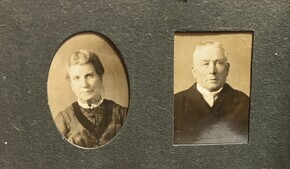
SEARLE, Victor
| Service Number: | 2439 |
|---|---|
| Enlisted: | Not yet discovered |
| Last Rank: | Private |
| Last Unit: | 20th Infantry Battalion |
| Born: | Newport, nr Saffron Walden, Essex, England., August 1891 |
| Home Town: | Wyong, Wyong Shire, New South Wales |
| Schooling: | Church of England Council School Saffron Walden Essex England |
| Occupation: | Storeman |
| Died: | Killed in Action, France, 26 July 1916 |
| Cemetery: |
No known grave - "Known Unto God" Villers-Bretonneux Memorial, Villers-Bretonneux, Picardie, France |
| Memorials: | Australian War Memorial Roll of Honour, Villers-Bretonneux Memorial |
World War 1 Service
| 6 Sep 1915: | Involvement Private, 2439, 20th Infantry Battalion, Battle for Pozières , --- :embarkation_roll: roll_number: '13' embarkation_place: Sydney embarkation_ship: HMAT Ballarat embarkation_ship_number: A70 public_note: '' | |
|---|---|---|
| 6 Sep 1915: | Embarked Private, 2439, 20th Infantry Battalion, HMAT Ballarat, Sydney |
Help us honour Victor Searle's service by contributing information, stories, and images so that they can be preserved for future generations.
Add my storyBiography contributed by Geoffrey Gillon
Births Dec 1891 SEARLE Victor Saffron W. 4a 663
He was 26 and the son of James and L. Searle, of 5, Common Hill, Saffron Walden, England. He is remembered on the Saffron Walden War Memorial.
Saffron Walden is a market town in the Uttlesford district of Essex, England, 12 miles north of Bishop's Stortford, 15 miles south of Cambridge and 43 miles north of London. The main trading item in medieval times was wool. A guildhall was built by the wool-staplers in the market place, but demolished in 1847 to make way for a corn exchange. In the 16th and 17th centuries the saffron crocus (Crocus sativus) was widely grown, thanks to the town's favourable soil and climate. The stigmas of the flower were used in medicines, as a condiment, in perfume, as an aphrodisiac, and as an expensive yellow dye. The industry gave Walden its present name. In the records of the Court of Common Pleas, the town was called Magna Walden in Hilary Term 1484, and Chipping Walden in the 15th and early 16th centuries, but by the 1540s it had become Saffron Walden.











